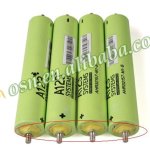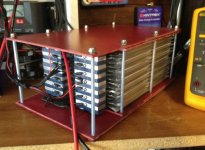agniusm
1 MW
icecube57 said:I know we all have resorted to a nice layer of Gorilla Tape but has anyone used heat shrinking tape to get compression? It wouldn't be that much compression.It would be no different than hobby king cells. Im considering it for my nissan leaf cells since i can't find heat shrink big enough to fit the cells.
Im personally not a fan of bulky end plates.
I got some 2 large sizes from Paul, aka cellman:
The topic is OK. But I miss a discussion about measuring forces applied and compression made out of thin air will do no good. If the man says 15psi, thats what I want to get. There was a lot of speculation going on in regards to these cells, and how one must handle them or build them into batteries which turned out, well, thin air. I think putting 300+kg weight on top of the battery and then strapping it is out of the question which leaves some kind of sensors. Perhaps someone can comment on them before we go into inventing something which will do no good?








